Kia EV6 Vs Hyundai Ioniq 5 Comparison: Sibling Rivalry

Don’t fight, kids.
This was bound to happen. The 2022 Kia EV6 and Hyundai Ioniq 5 share the same genes. These two all-wheel drive, all-electric models ride on an identical platform, carrying the same size battery packs. We drove the Kia EV6 last week and adored it; around the same time, we crowned the Ioniq 5 our 2022 Green Vehicle of the Year. Safe to say we love them both.
Get a Quote on a New Kia EV6 or Hyundai IONIQ 5But just like two siblings, they’re both special in their own ways. In fact, we were sure they had complementing strengths, strengths that contrasted with the others’ weakness. Sure enough that we just so happened to have the Ioniq 5 on-hand when we picked up the EV6 for review. Here’s what we learned after a week of having both kids under one roof.
Styling
EV6: We could fill most of this comparison talking about the difference in styling between these two. The EV6 is the more modern option, a unique shape that doesn’t quite fit into any of the pre-conceived segments. Is it a crossover? A wagon? A car? Whatever it is, we enjoy how Kia is pushing the envelope here, using an EV as a jumping off point to reconsider what a modern car can be. It’s one of those designs that needs to be seen in person, where the low stance and wide proportions give it a real sporty, concept car vibe. The dramatic flair of the rear haunches gives it a powerful stance—the 577-horsepower GT should look great.
There are a bunch of cool details all over the EV6 exterior. The way the lower body trim aligns with the flick of the taillights, which wrap right around the tailgate to form an integrated spoiler, is a remix of the wraparound chrome along the rear window of the Kia K5. Speaking of chrome, Kia has integrated diamond-textured chrome into the taillights, a material found in different spots on the Sorento, Carnival, and Seltos. We’re also big fans of the puddle lights built into the outer edges of the rear spoiler. The EV6 isn’t what we’d call pretty, but it’s a fascinating design that previews big changes at the Korean brand.
SEE ALSO: Ford Mustang Mach-E vs Tesla Model Y ComparisonIoniq 5: The Ioniq 5 captures the nostalgia-tinged zeitgeist in a way no other current car has. Of these two, it certainly drew more attention, looking like it had rolled right out of Cyberpunk 2077 and onto local roads. I said that the Hyundai “makes everything else around it look ancient” in the First Drive Review last December; that’s still the case, even as they begin showing up on the roads.
Like the Kia, The Ioniq 5 colors outside the lines of the established segments. This is a larger car than it appears; the stance and proportions say VW Golf, but the truth is more Tucson-sized.
What makes the Ioniq 5 such a covetable item are the details. Pixel-style headlights are just different enough to stand out, and the thin strips of light below them—in what we’re calling the “metallic moustache”—give it a signature night-time look. The active flaps in the lower bumper make it seem alive too, two nostrils breathing in. The chiselled, geometric shape is pure designer gold, and the whole shape is wrapped up what is easily the coolest full-width taillight setup on the market. Hyundai, like Kia, has placed just a little too much focus on style over substance though, by omitting a rear wiper. In winter, it’ll make it about half a mile before the rear window is covered in road grit.
For a generation obsessed with nostalgia, the Ioniq 5 hits all the right notes. To this writer’s eyes, anyway.
Bottom Line: Apropos of nothing, more people we talked to online preferred the Hyundai’s looks. Those who saw them in person preferred the Kia. Your tastes are your tastes, of course. At least we can all agree both cars need a rear wiper, right?
Interior and Cargo Space
EV6: Fans of traditional interior layouts will find a lot to like in the EV6. No giant touchscreen ousting all the physical controls here: instead, the EV6 is a sort of natural evolution of the Niro’s interior. A curved panel houses both instrument and infotainment screens, sitting proud of the gently concave dashboard surface. Kia’s decision to shift most of the typical under-dash gubbins forward in the car has lead to a low-profile dashboard, maximizing space in the footwells. There’s a sizeable storage space between the seats, below the “floating” center console. I like Kia’s positioning for the Qi charger too, though anything bigger than the latest iPhone Pro Max will not fit. The blend of materials and colors up front lend the EV6 a more premium feel than the Ioniq 5.
There’s just not a lot of space up front. The EV6 uses a traditional moonroof instead of the big glass panel in the Hyundai, and that puts the requisite headliner bump right where my head is. Folks over six-foot are going to have a hard time getting comfortable up here. That’s a shame, because the seats themselves, with a mix of white artificial leather and Alcantara, are an excellent mix of comfortable and supportive. The Kia’s dramatic roofline does give it a letterbox view out of the rearview, as well.
The feeling continues when you head to the back. A rising windowline and no glass above makes the EV6 a darker space for rear-seat passengers, though headroom is actually over an inch better than up front (38.0 inches / 965 millimeters). Legroom is also an adult-friendly 39.0 inches (991 mm), with a perfectly flat floor so the middle rider doesn’t have to fold their knees into their chest. The outboard seats benefit from heating on this high-level trim, too.
The Kia EV6 offers buyers 24.4 cubic feet (691 liters) of storage space with the seats up; fold them flat and that opens up to 50.2 cubes (1,422 L). You’ll find more space in the similarly-sized Sportage—especially the upcoming 2023 model—but you’d be sacrificing that seriously cool shape. Life is compromise.
Ioniq 5: The Ioniq 5 goes for a softer, rounder feel inside, a contrast to its drawn-with-a-protractor exterior. It’s simpler than the Kia’s, for starters. Hyundai has gone for a grayscale look that feels more Ikea, prioritizing soft materials over the Kia’s shininess. There’s even more space for storage between driver and front passenger, and we haven’t even talked about the Ioniq 5’s party trick. The center console slides fore and aft by about six inches, which is apparently to pass things to the back row. Neat, though the stack is made of cheap-looking plastic. We wish there were a tidier space for the tethered smartphone setup, too.
The Hyundai’s seating is very lounge-like, less contoured than the striped Kia thrones. It’s comfortable, though the flatness of the bottom cushion may not be to everyone’s tastes. There’s much more headroom up front, and the glass roof starts earlier, letting in more natural light. The view out the rearview is short, but better than the Kia’s, and sight lines are excellent.
The Hyundai’s rear seats are flatter than the Kia’s. There’s less headroom here, by about half an inch (13 mm), but Ioniq riders gain that much in legroom. Blame that giant glass roof, though it does let in so much more light than the EV6 rear passengers receive. A tradeoff, then.
The Ioniq 5’s slightly boxier tail section allows it to carry 10-percent more stuff out back, with an official measure of 27.2 cubic feet (770 L). Fold the rear seats flat and it keeps the lead, with 59.3 cubes (1,679 L).
SEE ALSO: Hyundai Tucson Hybrid vs Toyota RAV4 Hybrid Comparison: Fuel-Sipping Family HaulersBottom Line: The Hyundai is airier. The Kia feels more premium. For this 5’10” writer, who would rarely need to stick people in the back, I preferred the Kia. The EV6 interior just feels more special.
Tech and Features
EV6: Both cars come with a pair of screens atop the dashboard. The Kia goes for sleek slice of curved black plastic housing slightly larger 12.3-inch screeens, instead of the Hyundai’s big block o’ white. Everything else about them is pretty much the same, just with a different font. The infotainment screen is easy use, though there’s a little too much digging through sub-menus for my tastes. Response time is good, and the screen remains legible in sunlight.
The instrument cluster offers a good amount of customization, all the while keeping pertinent information front and center. As a friend pointed out, the lack of a dedicated audio info menu is unusual, but otherwise, the display is crisp.
The Kia loses marks for its annoying audio and climate controls. The same sliver of touch-sensitive area (and two rotary dials) houses both, and users need to press a button to use one or the other. It adds a needless extra step to something that should never be complicated. At least seat and wheel temperature controls are physical buttons on the leading edge of the console.
Both cars come with everything their manufacturers can stuff them with. An advanced head-up display with augmented reality navigation is included. The clever Blind-Spot View Monitor is also part of the package, providing a handy camera feed when a turn signal is active. The full litany of driver aids—automated emergency braking, lane assists, rear cross-traffic avoidance, 360-degree camera, parking sensors, adaptive cruise control, Highway Driving Assist II—makes the EV6 a very safe choice. We find HDA2 a very good system, gaining or shedding speed naturally.
Ioniq 5: Everything we said about the EV6 infotainment system applies here. Just slightly smaller, with a pair of 12.0-inch screens. The user interface is reasonably snappy and easy to navigate. They’re the same picture.
Hyundai includes a touch-sensitive area for climate, but gains the upper hand with physical media controls. But wait, if you want to activate the seat heaters you need to jump into a sub-menu! Ah, we were so close. Maybe we’ll take a lie down to think about it, care of the Ioniq 5’s reclining relaxation driver’s seat. A little footrest even folds out from underneath the main cushion.
Similarly, the Hyundai features the same safety and driver assists. Instead of retreading here, we’re using this space to discuss another shared feature: Vehicle-to-Load (V2L).
Standard on both of these cars, the Ioniq 5 and EV6 feature an adaptor buyers can connect to the exterior charge port to then power appliances. Up to 1.9 kW is available, enough for a primo glamping night. There’s also a second, 120-volt plug under the rear seats. Owners can even set the limit of remaining battery before the system puts the brakes on V2L. Speedy 800-volt architecture allows both vehicles to pull in more charge quicker—in theory—with a 5-to-80-percent charge time quoted at 18 minutes.
SEE ALSO: 2020 Ford Escape Hybrid vs 2020 Toyota RAV4 HybridBottom Line: Both EVs perform well here, with generally strong, modern tech suites. Both also have a digital Achilles’ Heel: the switchable controls of the EV6, and the extra taps for climate in the Ioniq 5. The healthy driver assist lineup, fast-charging, and clever V2L tech elevate both of these cars, however.
We’re giving this one to the Hyundai, as its fault is slightly less annoying than the Kia’s. Okay, it has the more legible font, too.
Powertrain, Driving Feel, and Efficiency
EV6: Both the EV6 and Ioniq 5 have the exact same on-paper stats: 320 horsepower and 446 pound-feet of torque, going to both axles. The same 77.4-kWh battery pack is sandwiched between their floors—though Kia says it uses a unique battery management setup.
Yet the EV6 drives very differently to the Ioniq 5. There’s a taut, responsive feel to the way the EV6 moves down the road, quickly suppressing bumps large and small while the body stays flat. Fling it towards a corner and watch the on-screen diagram as the system metes out power to each wheel. The EV6 pivots in a way that makes it feel almost rear-drive, just enough to keep it entertaining. It’s a whole lot of fun when you want it to be.
Ease off and the Kia continues to impress.The ride is still firm, yet the Kia is less harsh over corrugated surfaces. It also transmits less road noise to the cabin. Both cars ride on 255/20R winter tires.
Our real-world range did not measure up to the official numbers, though it was routinely around 15 degrees F (-10 C). The EPA quotes the EV6 AWD at 274 miles, with an mpg-equivalent rating of 105 combined. (Canadian NRCAN equivalents are 441 kilometers and 2.2 Le/100 km combined.) We picked the EV6 up with a displayed 98-percent charge, estimating 234 miles (377 km) of range. When we charged at 7-percent SoC, we had covered 183 miles (294 km). Some quick math suggests the car lost about 35 miles (57 km) from its original range estimate. Average use was 2.77 miles/kW (22.4 kWh/100 km).
Ioniq 5: From a power delivery perspective, the Ioniq 5 is identical to the EV6. Stomp the go-pedal and the instant torque shoves the car forward in one consistent push. Throttle response is a little soft at the top of the travel in both cars, to mimic the power build-up of traditional ICE cars. It makes for smoother take-offs from lights, devoid of the occasional jerkiness EVs can be guilty of.
Braking is also natural, with a smooth hand-off between friction and regenerative. As in the Kia, the Ioniq 5 offers a one-pedal mode, which can bring the car to a complete stop when you’re off the right-most pedal.
Everything suggests the Ioniq 5 is built for cruising. Its suspension tuning is softer; its steering lighter, though still smooth and direct. It excels (nudge-nudge) on the highway, where the soft ride and low center of gravity keep it composed and comfortable. Crumbling roads throw some raisins in that particular cookie batter though, as the Hyundai’s ride gets agitated in the city. Photographer Harry Zhou nails the feeling: it’s as if the Ioniq 5 is running its tires at twice the recommended pressure. We checked; it’s not.
Like the EV6, the Ioniq 5 couldn’t match its optimal range nor charging claims. Officially, it’s good for 256 miles (414 km), with a combined efficiency rating of 98 mpg-e (2.4 Le/100 km). We picked it up at a Kia-matching 98-percent charge, but with an indicated (185 miles) 298 km of range. We plugged into the same charger as the EV6 at a dicey 3-percent battery, travelling a total distance of 177 miles (285 km). That means the Hyundai was closer to its original quote, short by just 2.5 miles (4 km). Its average use was 2.62 miles/kW (23.7 kWh/100 km).
Bottom Line: The EV6’s Stinger-like stance isn’t just for show: this is the driver’s choice of these two relatives. It’s planted and pointy through corners, with a fun rear bias that has us excited for the 577-horsepower GT. The big surprise is that it’s also the calmer ride when we’re in cruise mode.
Conversely, the Hyundai feels more inclined for cruising, but its busy secondary ride dulls its sense of composure.
For us, driver appeal still matters, and that means the Kia EV6 wins by its low, squinty nose on this one.
SEE ALSO: Toyota RAV4 vs Nissan Rogue ComparisonPricing and Value
EV6: Kia will sell buyers a 2022 EV6 from $42,115 ($46,995 CAD), including destination. That amount nets a rear-drive model with the smaller 58.0-kWh battery pack and 167 hp. Moving up a trim subs in the larger battery pack here, and also improves the horsepower count, to 225. That one’s good for 310 miles (499 km) of range.
Our tester was the current range-topper, the AWD GT-Line (Package 2, in Canada). Its as-tested price is $57,610 ($64,245 CAD), including destination but before any federal or state/provincial rebates.
Ioniq 5: Hyundai offers the same rear-drive, 58.0-kWh entry setup, carrying a $40,925 ($46,824 CAD) price tag, including destination. Moving up to the larger battery requires at least $44,875 ($53,824 CAD), increasing both horsepower (225 hp) and range (303 mi / 488 km).
Similarly, our tester was the plushest Ioniq 5 money can buy. Our Canadian-spec tester is the AWD Ultimate (Limited in the US), which starts at $55,745 ($61,824 CAD). Ours adds the matte paint for an extra $1,000 on either side of the border; we’d say skip it, preferably for Digital Teal.
Bottom Line: Considering how much these two have in common, it’s not surprising their pricing is so close. The Hyundai is slightly better value—but we think the Kia’s nicer interior (mostly) justifies its higher price.
SEE ALSO: Kia Sorento vs Honda Pilot Comparison: Three-Row ThrowdownVerdict: Kia EV6 vs Hyundai Ioniq 5 Comparison
It turns out that the 2022 Kia EV6 and Hyundai Ioniq 5 are more different than their shared platform suggests. While company reps tell us they both worked separately on these cars, it’s hard not to imagine these two EVs’ subtly different positioning within the market wasn’t planned from the start. Both have debuted and immediately shot to the top of the class.
Of the two, the Kia will appeal more to drivers. It doesn’t just look sportier; it feels it. This is a low-slung, well-balanced package, and arguably now the best drive in the field (sorry, Mach-E). It pulls off a sublime balance by being the better-riding car, too. The Kia’s interior is a higher-quality place to spend time, though it’s less spacious and those touch controls are silly.
Obviously we’re big fans of the Ioniq 5. We wouldn’t have awarded it our 2022 Green Vehicle of the Year if we weren’t. Its concept car looks do a lot of heavy lifting here, because its interior feels a little cheap after the built-a-better-BMW experience inside the Kia. You want the Hyundai to be a great cruiser, and it is on the highway, but city driving can be brittle. It’s more spacious, but has a slightly shorter range.
Some days we liked the Kia more, others, the Hyundai. In the end, we loved them both. You wouldn’t pick one kid over the other, would you?
Become an AutoGuide insider. Get the latest from the automotive world first by subscribing to our newsletter here.

Kyle began his automotive obsession before he even started school, courtesy of a remote control Porsche and various LEGO sets. He later studied advertising and graphic design at Humber College, which led him to writing about cars (both real and digital). He is now a proud member of the Automobile Journalists Association of Canada (AJAC), where he was the Journalist of the Year runner-up for 2021.
More by Kyle Patrick



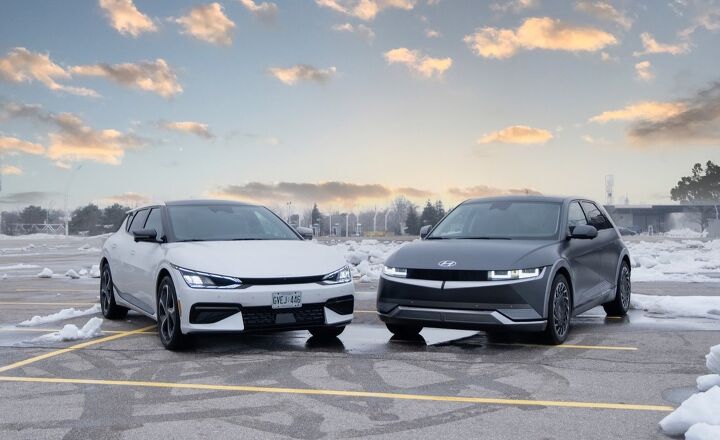





































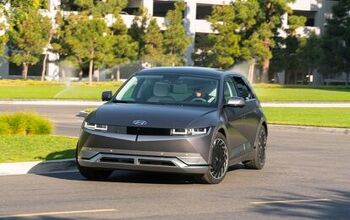



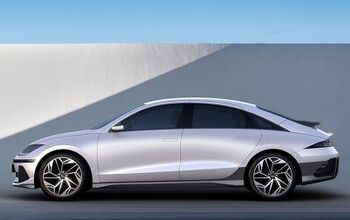



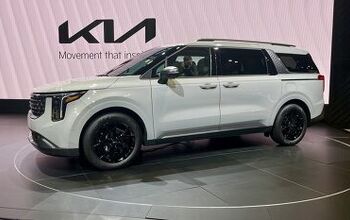
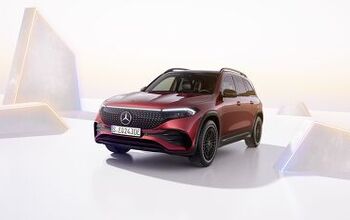


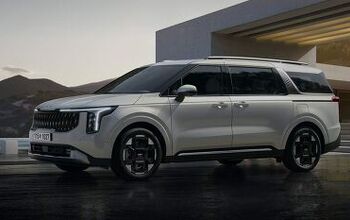
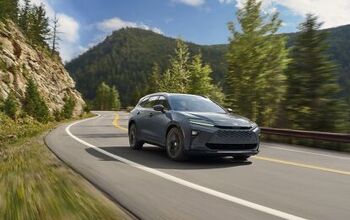
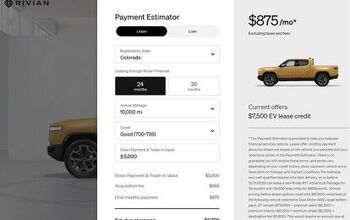
Comments
Join the conversation
I prefer the softer ride and better visibility of the Hyundai, but the wonky VW-like screen taps turn me off, and neither has a rear wiper. Nissan Ariya tests might have a solution...or not. Range under less than perfect conditions unacceptable. A lot to learn and develop in future could bring 300 AWD winter miles, but for now, pass.